一線之隔-屋上簷下之市宅共融
A Line Away – The Integration of Urban Housing Under the Eaves and Above the Roof
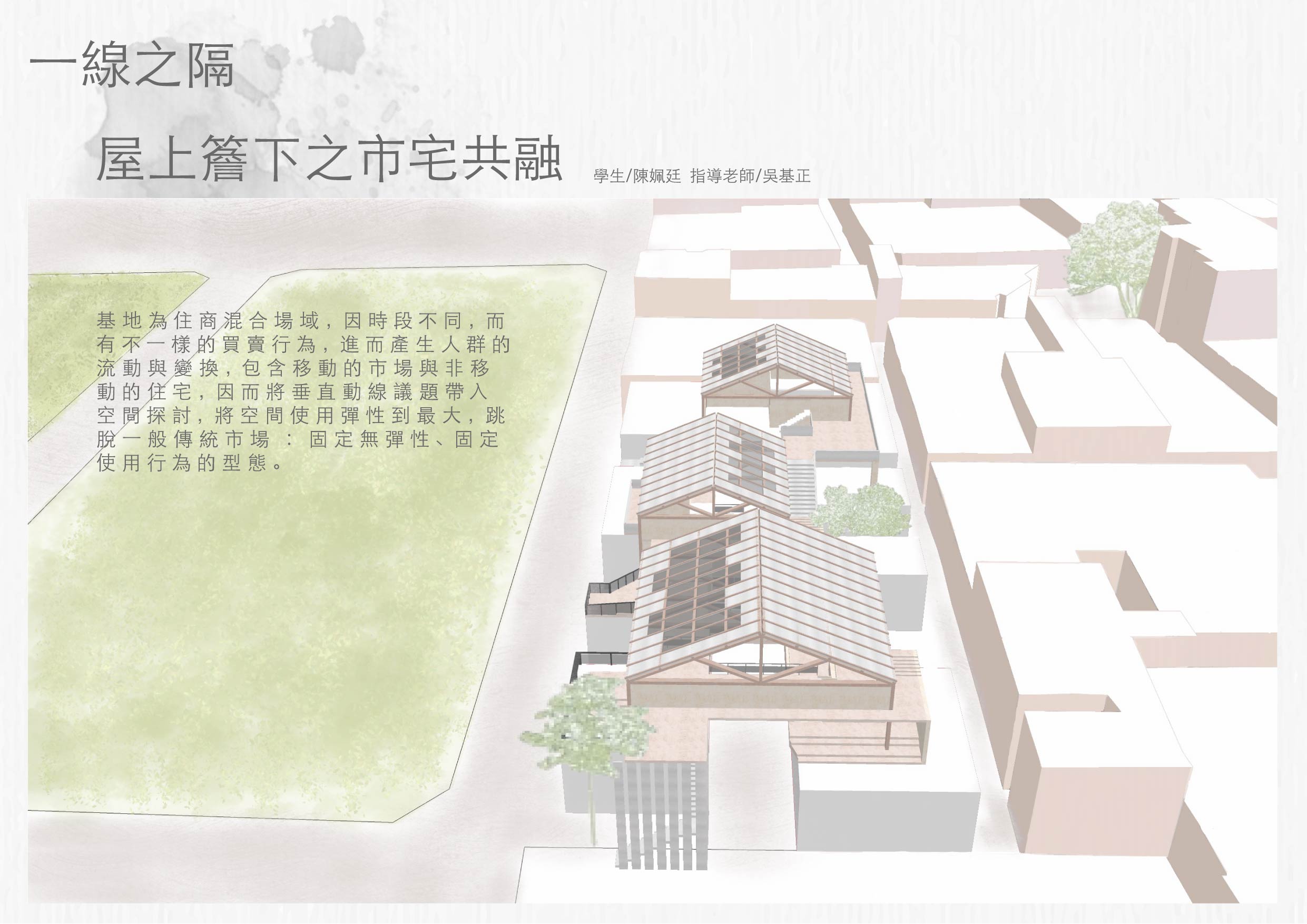
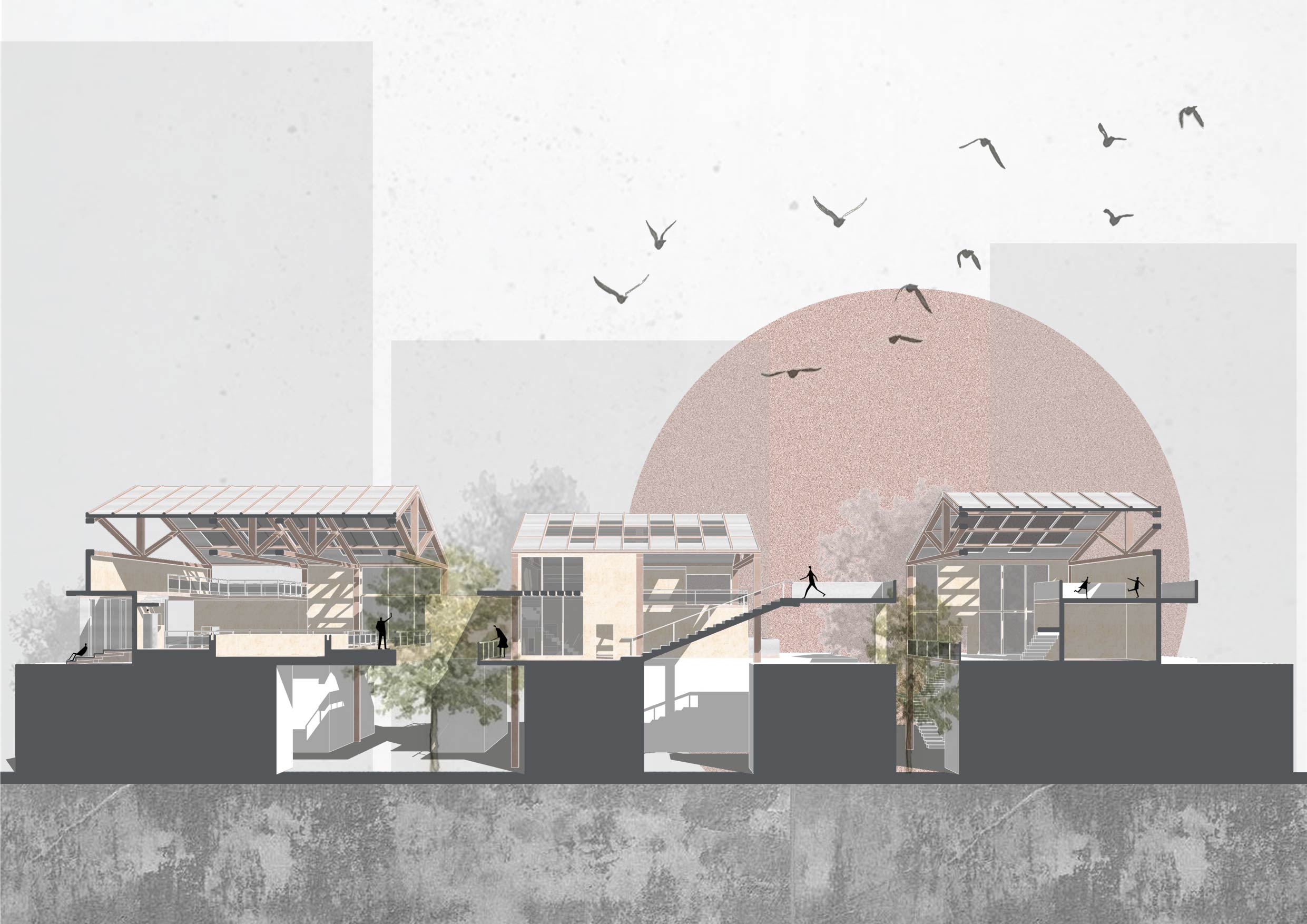
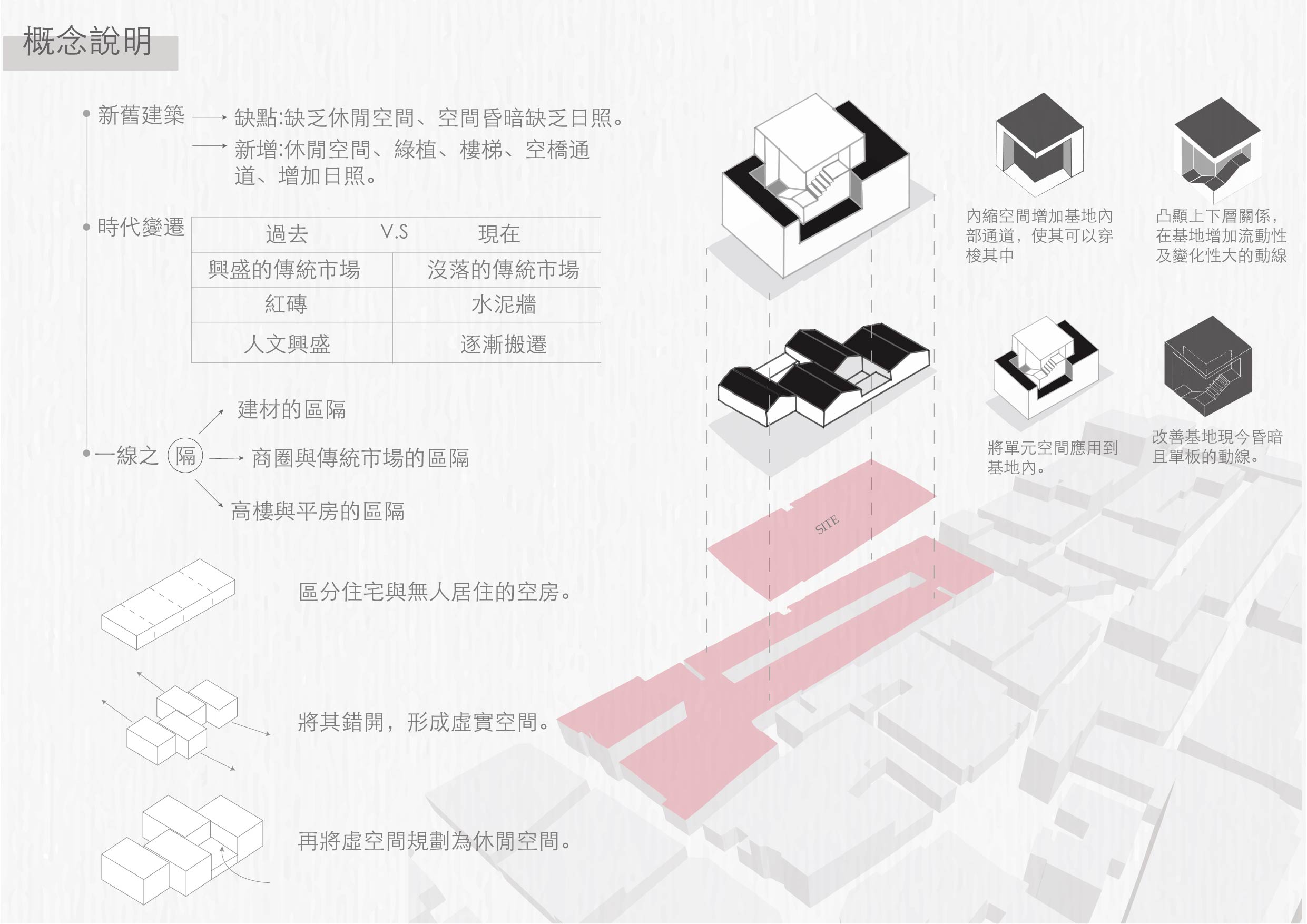
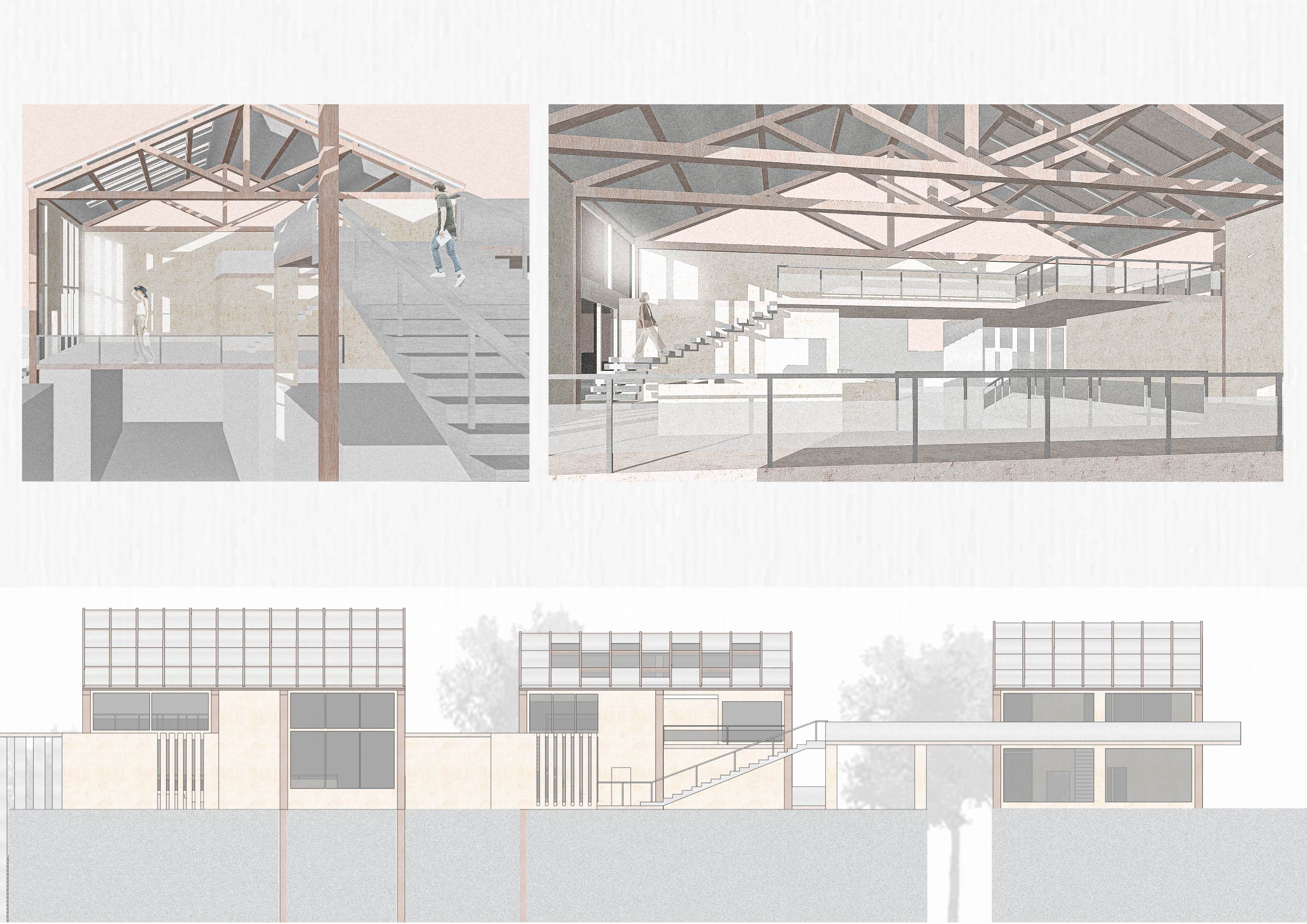
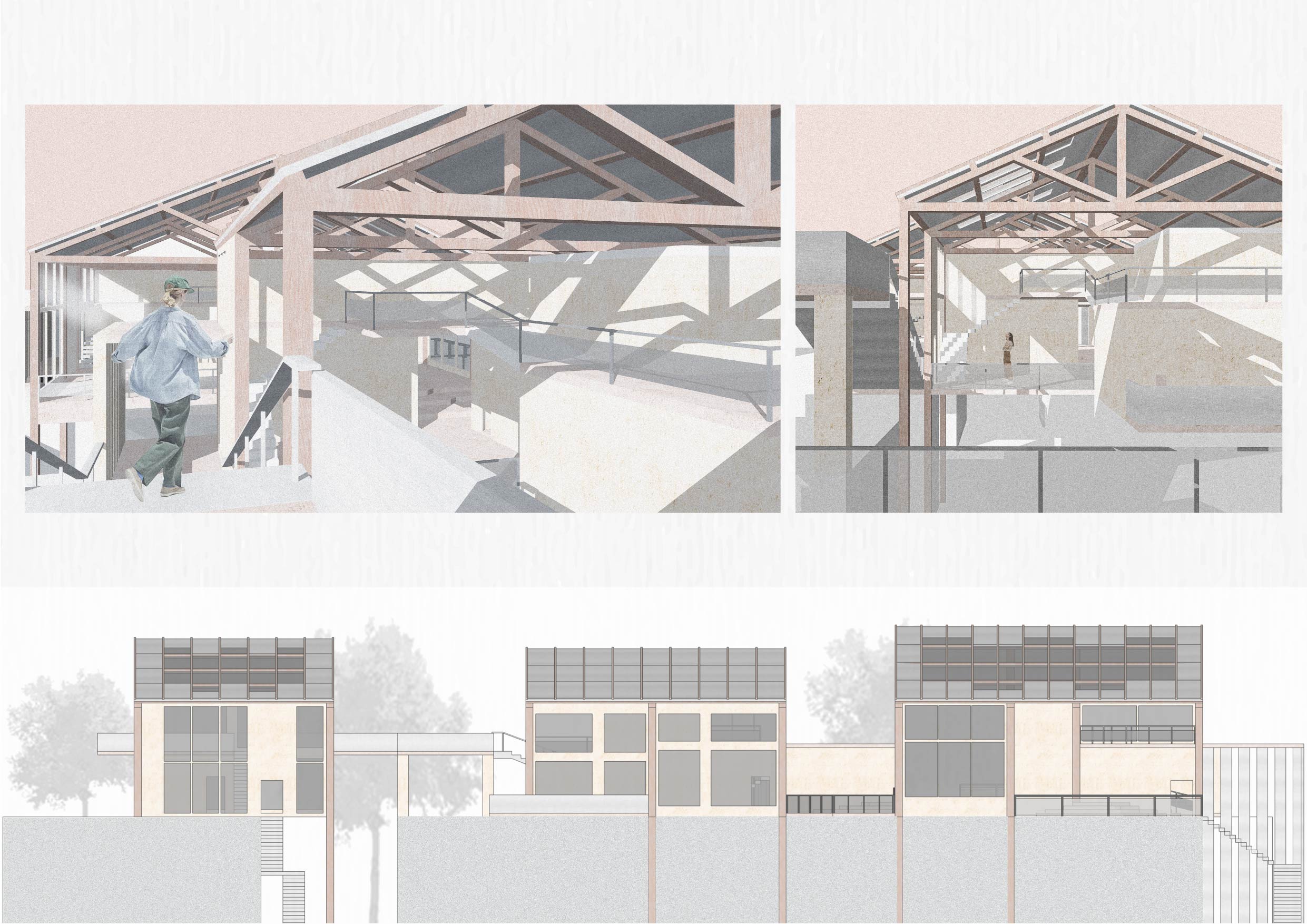
隨著重劃區的規劃,城市不斷拓展,政府與開發商往往為了提高土地利用效率和經濟價值,推動大量舊建築的拆遷與重建。這不僅改變了城市的面貌,也改變了居民的生活方式。
在此過程中,眷村等具歷史和文化意義的建築,成為重建浪潮下的犧牲品。這些眷村不僅是居住空間,還承載著一代代人的集體記憶和社區情感。它們記錄不同時期的社會文化變遷、戰後的移民歷史,並且代表著一種獨特的社區凝聚力。
基地為住商混合場域,因時段不同,而有不一樣的買賣行為,進而產生人群的流動與變換,包含移動的市場與非移動的住宅,因而將垂直動線議題帶入空間探討,將空間使用彈性到最大,跳脫一般傳統市場 : 固定無彈性、固定使用行為的型態。
A Line Away – The Integration of Urban Housing Under the Eaves and Above the Roof
With the planning of rezoning areas and the continuous expansion of cities, governments and developers often promote the demolition and reconstruction of large numbers of old buildings in order to improve land use efficiency and economic value. This has not only changed the appearance of the city, but also the lifestyle of its residents.
In this process, buildings with historical and cultural significance, such as military dependents’ villages, became victims of the wave of reconstruction. These military villages are not only living spaces, but also carry the collective memories and community sentiments of generations. They record social and cultural changes in different periods, post-war immigration history, and represent a unique community cohesion.
The site is a mixed residential and commercial area. Due to different time periods, there are different buying and selling behaviors, which in turn leads to the flow and change of people, including mobile markets and non-mobile residences. Therefore, the issue of vertical movement is brought into the spatial discussion, maximizing the flexibility of space use and breaking away from the general traditional market: fixed, inflexible, and fixed usage behavior.